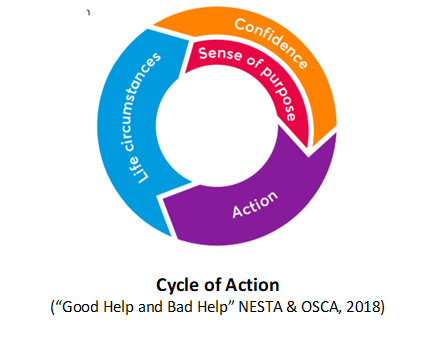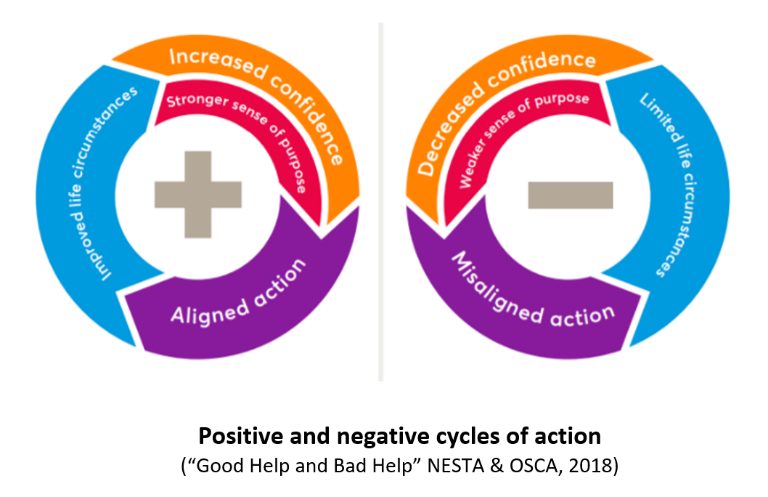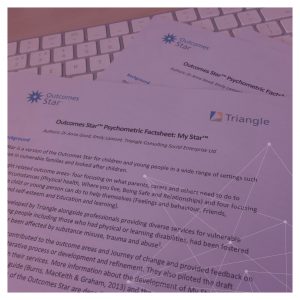
Research Analyst, Dr Anna Good reflects on her recent attendance at Homeless Link’s conference on women and homelessness and shares how Triangle’s improvements to the Homelessness Star align with many of the event’s themes.
I had the privilege of attending the ‘Delivering for Women: Women’s Homelessness Conference’ organised by Homeless Link on the 29th June 2021. The timing could not have been better as Triangle is amid creating a new edition of the Homelessness Star, with a focus on applying our learning about how to be more gender- and trauma-informed.
The Homelessness Star was developed for and with both men and women, but much has changed in the 15 years since the first edition was published, including an upward trend in the number of women experiencing homelessness and the proportion of these women with multiple disadvantages. There are now services exclusively for women which use the Homelessness Star. A number of women’s centres provided data for our recent article, published in the Journal of Social Distress and Homelessness: ‘Psychometric validation of the Homelessness Star’.
Tailored support
The need for more tailored support was emphasised throughout the conference, with ‘gender neutral services’ described as often meaning designed for men. Concern was expressed that only two local authorities offered segregated accommodation as part of the Government’s ‘Everybody in’ scheme during the pandemic. There were powerful arguments for the harm that can be caused by the failure to address this, including the strong role of domestic abuse in causing women’s homelessness and the risk of service users encountering their abusers. Explicit references to domestic abuse and being the victim of crime are some of the key changes in the draft new edition of the Homelessness Star. The centrality of children highlighted in the conference is also reflected in the new edition.
Compassion and curiosity
Another key theme that resonated with the changes in the draft new edition (and with the overarching principles of the Outcomes Star), was the need to be compassionate and curious when women do not engage with support. Women tend to arrive at services with more complex needs, and many will have been let down repeatedly and felt unable to trust anyone throughout their lives. The Outcomes Star specifically assesses readiness to accept help and acknowledges that the situation can feel ‘stuck’ when people have additional barriers to engaging with support. The new edition of the Homelessness Star further emphasises that when people don’t accept help it is often because previous experience has made them anxious or distrustful of services, or because the help offered is not suitable for them.
A speaker with lived experience of homelessness and sex work, spoke passionately about being asked to rate her mental health as a tick-box exercise but not being offered appropriate support. Here again, the Outcomes Star is important because it not only measures outcomes but is also an integral part of keywork to improve these outcomes. As put succinctly by Becky Rogers MBE, “a good assessment of need leads to a more successful intervention”.
Triangle’s commitment
As I listened to the presentations, I became increasingly aware of the value of the investment we are making to ensure that the Homelessness Star is up to date with the advancements that have been made around the need for services to actively ensure that they are gender- and trauma-informed. I also noticed how well the existing Homelessness Star addresses so many of the factors identified as important during the conference, including being strengths-based and holistic.
We are already well underway with the new edition of the Homelessness Star. We reviewed it through many conversations and meetings, as well as a round table, drew together the feedback we received and created a draft edition 4 and are now inviting feedback and comments from those using the Star. More information on the new edition to follow.
*****
The Homelessness Star is one of the first Outcomes Stars and was created in collaboration with St Mungo’s through the London Housing Foundation Impact through Outcomes Programme. For more information on the Star or the new edition, its implementation and how it could support services working to support homeless folks, please contact Triangle.










 Dr Anna Good: Dr Anna Good is a Research Analyst at Triangle: a large part of her role involves testing the psychometric properties of the Star, conducting research and supporting organisations to make the best use of Star data. After completing an MSc and a PhD in Psychology with specialisms in behaviour change interventions and psychological research methods, Anna spent a number of years as a post-doctoral researcher, including two years as principal investigator on a prestigious grant examining health behaviour change.
Dr Anna Good: Dr Anna Good is a Research Analyst at Triangle: a large part of her role involves testing the psychometric properties of the Star, conducting research and supporting organisations to make the best use of Star data. After completing an MSc and a PhD in Psychology with specialisms in behaviour change interventions and psychological research methods, Anna spent a number of years as a post-doctoral researcher, including two years as principal investigator on a prestigious grant examining health behaviour change.